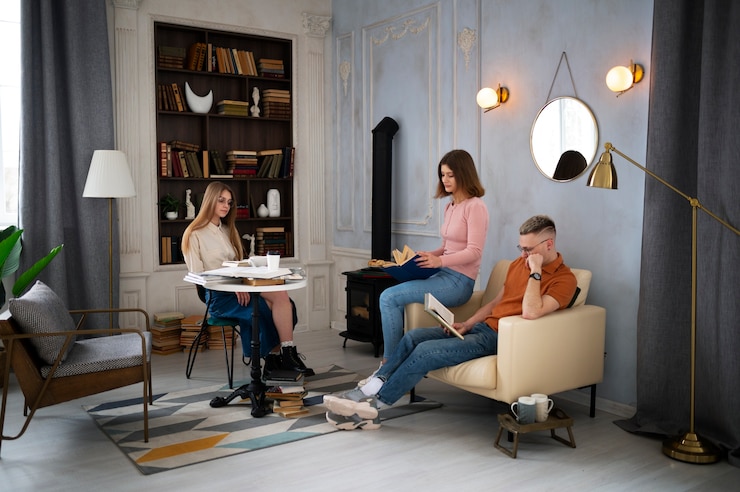[ad_1]
What might be the most recognized and admired mansion in Martinsville will be open Wednesday to the ticket-holding public.
Scuffle Hill, also known as the Christ Episcopal Church Parish House, at 311 E Church St., is being featured on the Historic Garden Week tour for the first time.
The original house was built in 1905 by Colonel Benjamin F. Stevens, former president of Liggett and Myers Tobacco Company, and named Oak Hall, said Page Beeler, member of Christ Episcopal Church and the Garden Study Club.
The house burned down on Feb. 19, 1917, and was mostly rebuilt by Col. Pannill Rucker, Steven’s son-in-law, using the four walls of the house that were still standing after the fire. The house was then bought in 1920 and finished by Rives S. Brown, said Virginia Windle in her History of Scuffle Hill House.
In 1933 William Letcher Pannill, founder of Pannill Knitting, bought the house. He renamed it Scuffle Hill because, legend has it, he had to scuffle up the money to pay for it.
People are also reading…
The church bought the house in 1959, said Beeler, and the house was appraised in the same year as being worth $100,000.
In the 1960s, Christ Church remodeled the house to use for church activities and social functions.
In 1997, the Parish house was named to the National Register of Historic Places, which means it was recognized by the Virginia Board of Historic Resources as a Virginia historic landmark.
While the house started as a private residence, it now is used for Sunday school classrooms, receptions of all kinds, offices, Boys & Girls Cub meetings and weddings.

Though the Parish house was built in 1905, it was rebuilt in 1920 after a fire burned down the house on Feb. 19, 1917.
In 2004, an new air conditioning and heating system was installed and the house was redecorated by the late Carol Deaton, a member of the congregation, Beeler said. Deaton added elements of new paint and wallpaper and recovered some chairs.
A large staircase with a tan carpet dominates the center of the house, facing the front door. The stairs are original to the house after its rebuild from the intricate woodworking is throughout the house.

The wide center hall of the Parish House features a graceful staircase.
At the top of the stairs is a wooden table that is also original to the house after its rebuild, and several chairs are original as well.
The house has seven bedrooms, each with its own individual fireplace, that will not be open for the tour.
The majority of the furniture that is not original to the house after its rebuild has been donated by members of the congregation and former residents of the home, said Beth Cahill, member of Christ Episcopal Church and the Garden Study Club.

This sitting room is to the left of the front room and contains a mixture of teal and cream-colored furniture with wooden accents.
A sitting room to the left of the entrance is decorated with wooden furniture with a cream-colored couch, two teal chairs, decorative vases, matching lamps on side tables on either side of the couch, beige curtains, a piano that was donated to the church, a Federalist style mirror over the fireplace, a tiger striped mahogany empire style secretary desk and a gold pier mirror that is original to the home.
The piano in this room will be played during the tour all day, mostly by people from local churches, Beeler said.
This room and the library to the left of the entrance both have pocket doors that slide away into the walls when open.
The library is largely covered in detailed dark mahogany wood from the walls to the door frames. Putting in all the woodwork took around 18 months, Cahill said. The decorations in the room include two cream-colored couches, several chairs with blue and red accents to match the curtains, matching lamps on two wooden side tables, a wooden dresser, bookshelves, two chandeliers and a fireplace and mantle with Georgian-and Federalist-style influence.
All of the fireplaces in the house have a cast iron lining with unique designs on them; the one in the library features a shell.

Seven rooms of the Parish House have their own fireplaces, each with a unique design. This is the library’s fireplace, which has a cast iron lining inside it.
Through the library is a dining room which is dominated by a massive mahogany dining room table and chairs made by Henkel Harris. The room also holds a locked cabinet full of fine china, and the table will be set with that china during the tour. The fireplace in the dining room is made out of a unique pink marble, said Cahill, and is covered with a French-style screen. The room also displays an antique mirror.
To the outside of the house some minor changes were made, including an iron railing and two sets of stairs which were added on either side of the door to create a new pathway from the parking lot to the front door. The iron railing was taken from the original home and repurposed.

This iron railing was repurposed from the original house to block off the old street access entrance to the house. There are now two staircases on either side of the house that lead to the door.
Monique Holland is a reporter for the Martinsville Bulletin. She can be reached at [email protected] or at 276-224-2566.
[ad_2]
Source link





More Stories
Stuck for Christmas gifting ideas? A digital photo frame is the perfect solution
20+ Modern Christmas and Holiday Home Decorations and Decor
What You Need to Know to Build a Raised Deck